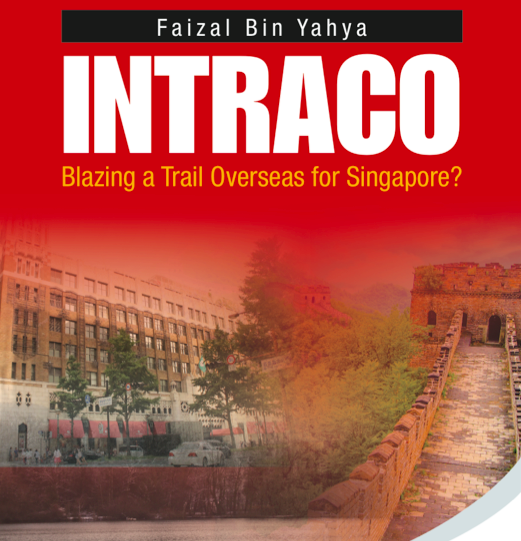
In the uncertain post-independence era in Singapore, the government assumed an entrepreneurial role to develop the economy. Then-Finance Minister Dr. Goh Keng Swee mooted the creation of government-linked-companies (GLCs) and staffed them with bright and energetic civil servants. In the late 1960s and 1970s, the GLCs developed key sectors of the economy such as trading, manufacturing and services, which the private sector deemed too risky or costly to develop or where it simply did not have the appetite to await long-term returns.
Among the GLCs established in the late 1960s was the International Trading Company (INTRACO). INTRACO was tasked to explore new markets overseas and to discover new sources of raw materials at competitive prices to support Singapore’s export-oriented industrialisation (EOI) strategy.
Today, GLCs such as DBS (formerly the Development Bank of Singapore) and Singapore Airlines have endured. They have become valuable Singapore brands and are recognised at home and abroad. In contrast, many younger Singaporeans would not have heard of INTRACO, or remember its contributions to Singapore’s early industrialisation.
In the absence of the Trade Development Board that was only created in 1983, INTRACO promoted Singapore’s products and services overseas through trade fairs and trade missions. It also developed economic and trade links with countries in the Communist bloc – in particular, the People’s Republic of China (PRC) – and emerging economies in Africa, West Asia and the South Pacific. At a time when Singapore did not have diplomatic relations with many communist regimes, inability to trade with them would have severely curtailed its EOI strategy and undermined its chances for survival. INTRACO also set about establishing overseas representative offices in order to have a better pulse of overseas markets and to scour the world for new business opportunities.
INTRACO also contributed to stability in rapidly-changing Singapore in the 1970s. It was tasked to develop a rice stockpile after the government realised that the volatility of rice prices and supply could be a major factor for social instability in Singapore. In 1972, INTRACO was listed on the Singapore Stock Exchange to raise capital for its potential expansion. It was incorporated into the portfolio of the government’s main holding company, Temasek, in 1974. Temasek eventually divested its stake in INTRACO in 2003.
In my recently-published book, INTRACO: Blazing a Trail Overseas for Singapore? I examine why INTRACO as a leading state enterprise lost its relevance and was eventually divested. The possible factors include the changing geopolitical situation, the problem of human resource churn and fundamental questions over the extent of the government’s role in the economy.
Some would argue that INTRACO “failed” because it was not able to reinvent its business model as the global economy changed with the demise of the Cold War. With the collapse of the Berlin Wall in 1989 and thereafter the fall of the Soviet regime, INTRACO’s ability to trade in a more liberalised global trading regime came into question. Moreover, Singapore’s establishment of full diplomatic relations with the PRC in 1990 was an added death knell.
An exodus of senior talent also affected INTRACO’s ability to redefine itself from a middleman between suppliers and consumers into a significant player in activities such as logistics, information technology and infrastructure development, all of which were burgeoning sectors in Singapore and the region. It had already heeded the government’s call for regionalisation, by partnering Singapore’s SMEs to venture and explore business opportunities overseas.
By the 1980s, there was ongoing debate about the future role of state intervention in the economy. GLCs were expected to operate like commercial entities. But some of the bureaucrats involved with GLCs did not have the appetite for the risk involved in trading with overseas partners. The pressure to make profits had led several to expand aggressively in Singapore, thus “crowding out” smaller businesses in Singapore’s small domestic market. To placate the private sector, the government urged GLCs to spread their wings overseas. INTRACO was categorised as a non-core business for Temasek and marked for eventual divestment.
Today, INTRACO is still listed on the stock exchange and continues to be a trading company with operations across different countries in Asia and beyond. Its story offers insights into how newly-independent Singapore embarked on its industrialisation strategy. At a time when the state had very few levers to create jobs and build the nation, GLCs like INTRACO helped fulfill our immediate economic development objectives.
Dr Faizal bin Yahya is a Research Fellow at the Institute of Policy Studies, NUS. INTRACO: Blazing a Trail Overseas for Singapore is available in bookstores. An updated version of this essay was published in TODAY on 28 April 2015.
